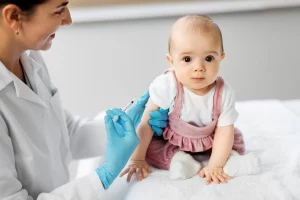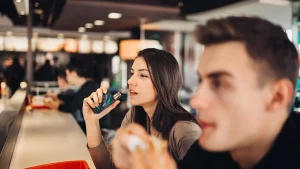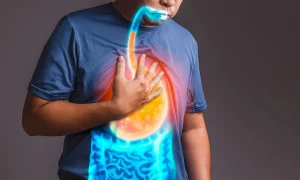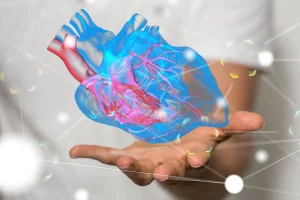(HealthDay News) — As the number of U.S. coronavirus cases neared 637,000 on Thursday, President Donald Trump announced that new federal guidelines will soon be issued to help state officials re-open parts of the country.
Meanwhile, 5.2 million more Americans joined the unemployment rolls, as new jobless claims numbers were released Thursday morning, The New York Times reported.
As coronavirus cases and deaths in several of America’s early hotspots continued to show signs of plateauing, governors from those hard-hit states worked on regional pacts to help re-open those areas when social distancing orders can be relaxed.
The governors from New York, New Jersey, Connecticut, Pennsylvania, Delaware, Massachusetts and Rhode Island said Monday they would begin to draw up a plan for when to reopen businesses and schools, the Associated Press reported.
Later on Monday, the governors of California, Oregon and Washington announced a similar pact, the AP reported.
“This pact is about what do we do after we reduce some of our social distancing stay home initiatives,” said Washington state Gov. Jay Inslee. “It’s more of the issue of how are we going to have consistent-as-we-can testing and contact tracing initiatives. In order for any of these three states to be successful, we simply have to have increased products available with which to do this testing. This is absolutely critical.”
In California, Gov. Gavin Newsom on Tuesday announced a series of steps, including extensive testing, that are needed to help the nation’s most populous state “transition from surge to suppression,” the AP reported.
But, “let’s not make the mistake of pulling the plug too early, as much as we all want to,” Newsom warned.
Three-part plan
For his part, Trump continued to push for re-opening the U.S. economy in early May. A team of officials from the U.S. Centers for Disease Control and Prevention and the Federal Emergency Management Administration is crafting a national plan to get Americans back to work, the Post reported.
The plan lays out three phases: a national communication campaign and community readiness assessment until May 1. After that, there would be a ramping up of manufacturing testing kits and personal protective equipment, and increasing emergency funding. Then, staged re-openings would begin, the Post reported.
The first priority, according to a CDC response document obtained by the newspaper, is to “re-open community settings where children are cared for, including K-12 schools, daycares, and locally attended summer camps, to allow the workforce to return to work. The document also says that during phased re-openings, recommendations on hand-washing and wearing face coverings in group settings must be strictly followed, the Post reported.
The plan also calls for the CDC to establish a COVID-19 Response Corps to help state and local health departments with key public health functions, including contact tracing, which involves locating people who may have had contact with someone infected with the coronavirus.
‘Rolling re-entry’ envisioned
Dr. Anthony Fauci, the country’s top infectious disease expert, told the AP on Tuesday that the United States doesn’t yet have the testing and tracing procedures needed to begin re-opening the economy.
“We have to have something in place that is efficient and that we can rely on, and we’re not there yet,” Fauci warned.
Any relaxation of social-distancing would have to occur on a “rolling” basis, not all at once, he said, adding that a vaccine might be possible by mid- to late winter, the AP reported.
“Please, let me say this caveat: That is assuming that [a vaccine is] effective. See, that’s the big ‘if,'” he told the wire service. “It’s got to be effective and it’s got to be safe.”
There were nearly 637,000 cases of coronavirus infection and almost 30,000 confirmed deaths in the United States as of Thursday morning, The New York Times reported.
One glimmer of hope emerged for a treatment that might save lives. The New England Journal of Medicine published a small study involving the “compassionate use” of the antiviral remdesivir. The medicine has been viewed by global health experts as the best early shot for treating the disease, the Post reported.
More than two-thirds of 53 severely ill patients showed improvement in oxygen support, the researchers said. Seventeen of 30 patients who were on ventilators were able to be taken off the life-support machines, the study showed.
“We cannot draw definitive conclusions from these data, but the observations from this group of hospitalized patients who received remdesivir are hopeful,” study author Dr. Jonathan Grein, hospital epidemiology director at Cedars-Sinai Medical Center in Los Angeles, told the Post.
Dr. Amesh Adalja, a senior scholar at the Center for Health Security at Johns Hopkins University’s Bloomberg School of Public Health in Baltimore, called the results “encouraging,” while cautioning that they needed to be kept in perspective, the Post reported.
Social distancing, face masks
As the economy continues to implode, Trump announced the creation of a second, smaller coronavirus task force aimed at countering the economic fallout from the virus, the Post reported.
When Americans do leave their homes, federal guidance now urges everyone to wear face coverings in public to curb the spread of COVID-19.
These face coverings can be non-medical masks, T-shirts or bandanas and they can be used while out at everyday shopping spots such as the grocery store, pharmacy or gas station, the AP reported. Medical-grade masks would be reserved for those dealing directly with the sick.
Any additional COVID-19 prevention measures are welcome, as the number of coronavirus cases worldwide passed 2 million.
As the U.S. economy continues to falter, Americans have struggled to find out if they can receive benefits from a $2 trillion stimulus package that was passed into law in March. The financial relief is just starting to be felt as state and federal agencies process millions of aid applications from small businesses and the newly jobless, the Post reported.
The legislation is set to send $1,200 to millions of Americans, including those earning up to $75,000, along with $500 per child. It will also give an additional 13 weeks in unemployment aid and a four-month enhancement of jobless benefits, the Times reported.
Hospitals on the front lines of the pandemic will also get $100 billion, the Times reported.
Signs of hope
But a new federal program to help small businesses during the coronavirus pandemic is already running out of money. Funding for the Paycheck Protection Program could be exhausted this week, meaning that the Small Business Administration (SBA) would have to stop approving applications, the Post reported. As of Wednesday evening, more than 1.4 million loans worth more than $315 billion had been approved, according to the SBA.
In some good news, millions of Americans have started to see promised tax rebates directly deposited into their bank accounts, the Post reported.
The help comes not a moment too soon, as roughly 90% of Americans are under stay-at-home orders, the AP reported.
New York City remains the center of the coronavirus outbreak in the United States, though the latest statistics show social distancing is working.
New York Governor Andrew Cuomo said Wednesday that while New Yorkers have shown they can “change the curve” and control the spread of coronavirus, there are still about 2,000 people a day who are being diagnosed with COVID-19 in the state.
“We’re still in the woods,” he said during a Wednesday media briefing.
Still, the healthcare system has basically stabilized and the “infection spread” is down to a “manageable number,” he added.
Testing is key
To further protect against the spread of COVID-19, Cuomo also issued an executive order stating all New Yorkers must have a mask or mouth and nose covering when they are not maintaining social distancing in public, CBS News reported. Cuomo laid out several situations where people should wear masks, including riding public transit, standing on a subway platform or walking in a busy neighborhood.
“[If] you’re not going to be able to maintain social distancing, you must wear a mask or cloth or an attractive bandana or a color-coordinated bandana, but you have to wear it in those situations,” Cuomo said.
People who violate the order could eventually face fines, but “you’re not going to jail for not wearing a mask,” Cuomo said.
Cuomo said large-scale testing, to find out who has COVID-19 and who has coronavirus antibodies, is the centerpiece of any re-opening plan, CBS News reported. The New York State Department of Health has already developed its own antibody test, Cuomo added. “We’ll actually do those tests. We don’t need a private lab,” he said Wednesday. This week, the state will begin conducting 2,000 finger-prick antibody tests per day. First responders, healthcare workers and essential workers will be prioritized, he said.
Elsewhere in the country, cases are spiking, particularly in the South: Louisiana, Florida and Georgia are facing alarming increases, with more than 59,000 cases and 2,288 deaths reported in those three states alone, the Times reported Thursday.
According to the Times tally, as of Thursday morning the top five states in coronavirus cases are: New York with nearly 214,000 cases; New Jersey with more than 71,000; Massachusetts with nearly 30,000; Michigan with nearly 28,000; and California with more than 27,000.
But California has recorded a drop in COVID-19 patients receiving treatment in intensive care units, while Washington state has also seen a leveling of cases, the Times reported.
Global crisis
Globally, the situation remains grim. In Europe, Spain reported more than 19,000 deaths by Thursday, despite signs the infection rate is slowing, a Johns Hopkins University tally showed. Deaths in Italy also remain high at 21,645, although numbers have begun to level off there as well.
In Italy, which reported the smallest number of new infections in a month on Tuesday, bookstores, stationery stores and shops selling baby supplies were allowed to open in many places, the AP reported. Forestry workers, needed to clear dead trees ahead of the summer fire season, also went back. In Spain, workers returned to some factory and construction jobs this week, while stores and offices remained closed.
Worldwide, the number of reported infections passed 2 million on Thursday, with more than 137,000 deaths, according to the Hopkins tally.
More information
The U.S. Centers for Disease Control and Prevention has more on the new coronavirus.
Source: HealthDay
Copyright © 2025 HealthDay. All rights reserved.

















